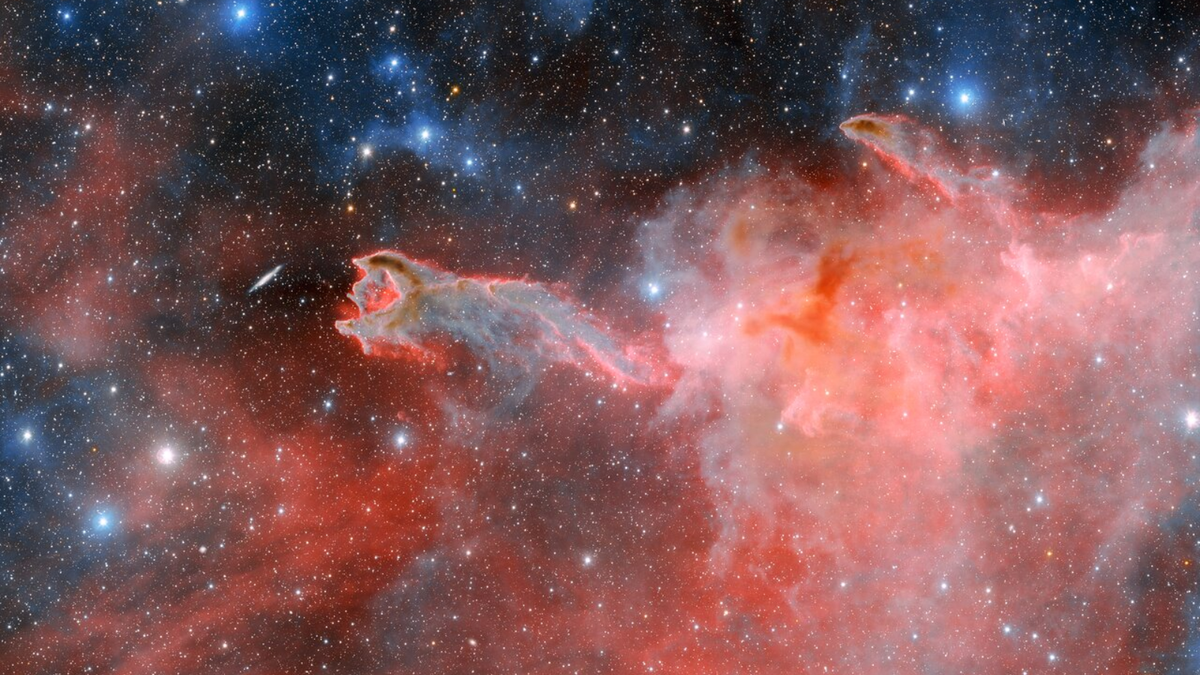Researchers have discovered a rare dust particle in a meteorite, formed by a star other than our sun. Using advanced atom probe tomography, they analyzed the particle’s unique magnesium isotopic ratio, revealing its origin from a newly identified type of hydrogen-burning supernova. This breakthrough provides deeper insights into cosmic events and the formation of stars. Credit: SciTechDaily.com
Scientists have discovered a meteorite particle with an unprecedented magnesium isotopic ratio, indicating its origin from a hydrogen burning supernova.
Research has discovered a rare dust particle trapped in an ancient extra-terrestrial meteorite that was formed by a star other than our sun.
The discovery was made by lead author Dr. Nicole Nevill and colleagues during her PhD studies at Curtin University, now working at the Lunar and Planetary Science Institute in collaboration with NASA’s Johnson Space Center.
Meteorites and Presolar Grains
Meteorites are mostly made up of material that formed in our solar system and can also contain tiny particles that originate from stars born long before our sun.
Clues that these particles, known as presolar grains, are relics from other stars are found by analyzing the different types of elements inside them.
Innovative Analytical Techniques
Dr. Nevill used a technique called atom probe tomography to analyze the particle and reconstruct the chemistry on an atomic scale, accessing the hidden information within.
“These particles are like celestial time capsules, providing a snapshot into the life of their parent star,” Dr. Nevill said.
“Material created in our solar system have predictable ratios of isotopes – variants of elements with different numbers of neutrons. The particle that we analyzed has a ratio of magnesium isotopes that is distinct from anything in our solar system.
“The results were literally off the charts. The most extreme magnesium isotopic ratio from previous studies of presolar grains was about 1,200. The grain in our study has a value of 3,025, which is the highest ever discovered.
“This exceptionally high isotopic ratio can only be explained by formation in a recently discovered type of star – a hydrogen burning supernova.”
Breakthroughs in Astrophysics
Co-author Dr. David Saxey, from the John de Laeter Centre at Curtin said the research is breaking new ground in how we understand the universe, pushing the boundaries of both analytical techniques and astrophysical models.
“The atom probe has given us a whole level of detail that we haven’t been able to access in previous studies,” Dr. Saxey said.
“Hydrogen burning supernova is a type of star that has only been discovered recently, around the same time as we were analyzing the tiny dust particle. The use of the atom probe in this study, gives a new level of detail helping us understand how these stars formed.”
Linking Lab Findings to Cosmic Phenomena
Co-author Professor Phil Bland, from Curtin’s School of Earth and Planetary Sciences said new discoveries from studying rare particles in meteorites are enabling us to gain insights into cosmic events beyond our solar system.
“It is simply amazing to be able to link atomic-scale measurements in the lab to a recently discovered type of star.”
The research titled “Atomic-scale Element and Isotopic Investigation of 25Mg-rich Stardust from an H-burning Supernova” was published in the Astrophysical Journal.
Reference: “Atomic-scale Element and Isotopic Investigation of 25Mg-rich Stardust from an H-burning Supernova” by N. D. Nevill, P. A. Bland, D. W. Saxey, W. D. A. Rickard, P. Guagliardo, N. E. Timms, L. V. Forman, L. Daly and S. M. Reddy, 28 March 2024, The Astrophysical Journal.
DOI: 10.3847/1538-4357/ad2996

Dr. Thomas Hughes is a UK-based scientist and science communicator who makes complex topics accessible to readers. His articles explore breakthroughs in various scientific disciplines, from space exploration to cutting-edge research.








